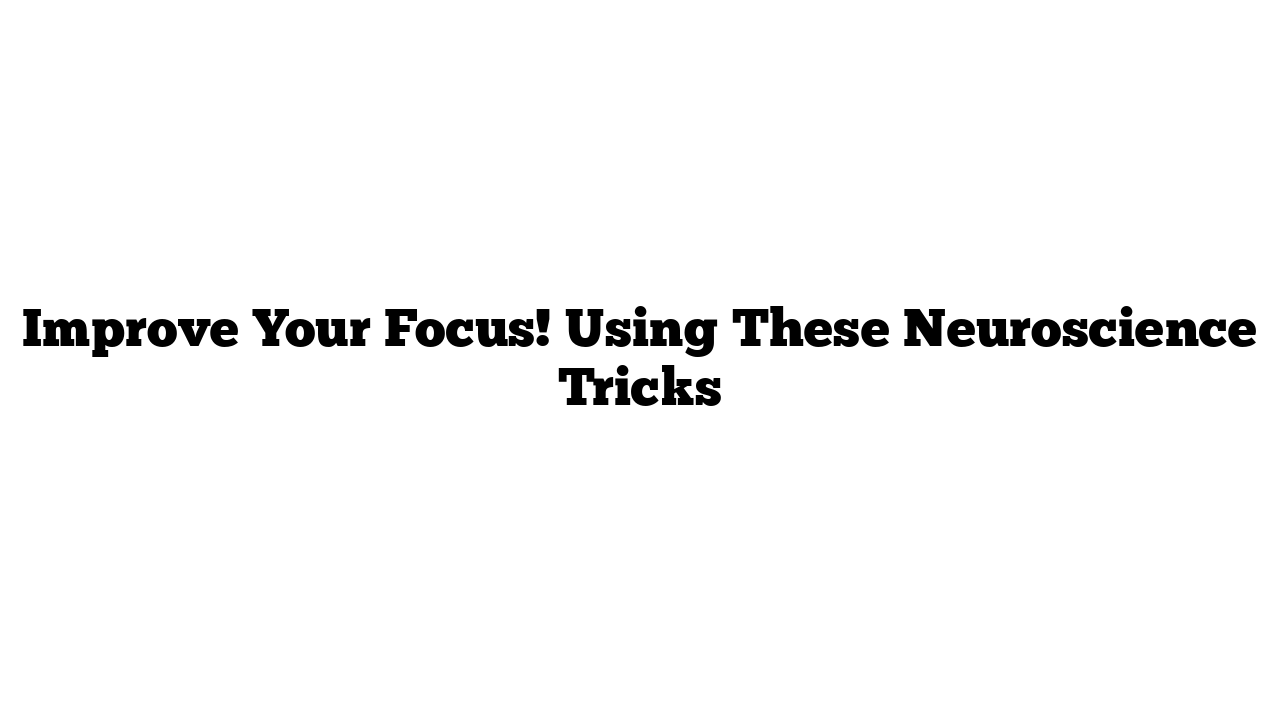Do you find it hard to focus these days? You sit at your desk, trying to work, but you keep checking your phone, and your mind wanders. You’re not alone! This was a challenge I faced during my time as a medical student. But here’s the truth: you’re not to blame for your distractions. Evolution is! Our brains evolved when new information was rare, but today, interesting stimuli are everywhere. What sets successful people apart is their ability to pay attention.
Today, I’ll share five neuroscience tricks to help you improve your focus.
Trick 1: Control Your Eye Movements
Did you know that your eyes can predict where your attention will go? Your eyes flicker toward something before your brain fully processes it. By controlling where your eyes look, you can enhance your concentration. Try a simple meditation technique: focus your gaze on a specific spot for an extended period—perhaps a candle flame or an interesting object. Reducing eye flicker can significantly improve your attention.
Trick 2: Warm Up Your Focus
Just like you warm up before hitting the gym, you should warm up your brain before starting a task. Spend the first two minutes calming down and signaling to your brain that it’s time to focus. Your brain naturally starts in an exploratory phase, scanning for interesting stimuli. To shift to a concentration phase, take a deep breath. This helps transition your brain from a sympathetic (active) to a parasympathetic (calm) state, making it easier to focus. Also, minimize distractions by creating a clean study environment with only one or two items in your field of view.
Trick 3: Escalate Slowly
Similar to how you wouldn’t start lifting heavy weights at the gym, don’t expect to focus for long periods right away. If you see someone concentrating for an hour, remember they likely started with just one minute of focus. Acknowledge your current attention span and gradually extend it. Keep track of how long you can focus before getting distracted; this can help you monitor your improvement.
Trick 4: Understand Attention Waves
Attention is like a tidal wave—it comes and goes. This fluctuation is linked to a chemical called norepinephrine, released in bursts from an older part of the brain. Accepting that your attention has limits is essential. It’s okay to take breaks! When you notice your focus waning, step back, breathe, and allow your attention to rebuild. Understanding your personal attention wave patterns—whether they last one minute or ten—can help you optimize your focus.
Trick 5: Stay in Flow
You’re more likely to pay attention to activities you enjoy. Finding joy in your tasks makes focusing easier. So, lean into what you love! Incorporate more enjoyable activities into your routine. Many people who follow their passions don’t see their work as a job; they find pleasure in it, and attention comes naturally. This is how you can achieve a state of flow.
Outro
These are five insights I’ve gained as both a medical student and a neuroscientist on building attention. There are more techniques to explore, like memory management and the Pomodoro Technique, which we can discuss another time. I hope these tips help you improve your focus!
Next time, we’ll dive deeper into neuroscience, productivity, and tips to help you improve. Cheers, everyone!
